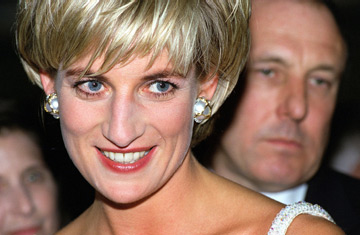
Personal correspondance between Diana, Princess of Wales and her father-in-law Prince Philip reveal a tender side to their relationship.
(2 of 3)
And then came Diana, the girl chosen to refresh the line, to bear its heirs, to be the new smiling face of the family. Despite the stately filigree Elizabeth had embroidered onto the Windsor facade, Diana found the dynasty dysfunctional, uncertain of its work, in truth more a firm than a family. Diana tried to serve. she tried to persevere. She tried to be dutiful. But in the end, she would not obey.
This disastrous turn of events nevertheless failed to dissipate popular fascination with the British royals. Indeed, it intrigued the world even more. For was this not to be expected of the line that had leavened history with domestic dramas both delicious and dolorous? Henry VIII and his six wives; the rivalry of a Virgin Queen and her all too lusty Scots cousin; the madness of George III and the cupidity of his sons; Victoria and the brood she produced to rival the Hapsburgs, marrying, marrying,marrying all over Europe.
Diana's catastrophic dalliance with the Windsors reverberated with history. It seemed as if the marriage and bitter divorce of Charles and Diana were inevitable evolutionary steps in the centuries-long intercourse between the Spencers and the Crown. For not only did the Spencers trace their descent from the same kings the Windsors claimed as ancestors, but in the 17th century alone, four of Diana's forebears were royal mistresses: Charles II was linked to three Spencer women, his brother James II to one. In the 18th century, Georgiana Spencer, the daughter of the first Earl of Spencer, scandalized the country not only with her many infidelities but also with her affair with the Prince of Wales, who may have been the father of one of her children. The same pathetic prince, after being abandoned by Georgiana, would pursue her sister Henrietta, who spurned him amid a comic seduction. In this century, a Prince of Wales again paid court to a Diana forebear: Lady Cynthia Hamilton, who chose instead to become the wife of the seventh Earl of Spencer and thus Diana's grandmother. The prince eventually turned to the American divorcee Wallis Simpson — and had to give up his throne for the woman he loved. What if Lady Cynthia had married the prince? The more cogent question is: Should not her decision have served as warning to her granddaughter to avoid a royal marriage?
History and its omens hovered around the marriage of Charles and Diana like uninvited guests bearing ill tidings. Tradition called for a wedding in Westminster Abbey. But Charles did not want to marry in Westminster, preferring St. Paul's Cathedral. He pointed out that a royal marriage had once been celebrated in the old St. Paul's: in the 16th century, Arthur, Prince of Wales, had married his Spanish bride Catherine there. It was an acceptable precedent — but an unfortunate one. Arthur died before the marriage was consummated, and Catherine, a prize because she was the daughter of Ferdinand and Isabella of Spain, was eventually wed to the new English heir, becoming the unhappy first of Henry VIII's six wives.
As for Diana, she wanted to avoid Westminster for reasons of personal history: her parents were married there in 1954. At that wedding, the Bishop of Norwich told the couple, "You are making an addition to the hoe life of your country on which, above all others, our national life depends." It turned out to be a blessing without efficacy. Indeed, the opposite was visited upon the Spencers. Diana wanted no part of that unintended curse. And so Charles and Diana were married in St. Paul's — in the end, a futile dodge.